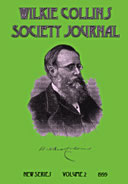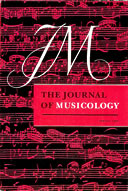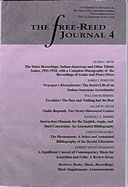When Margaret Oliphant reviewed The Woman in White in 1862, she
described Count Fosco partly in terms of what she perceived to be his
Italianate character:
No villain of the century, so far as
we are aware, comes within a hundred miles of him: he is more real, more
genuine, more Italian even, in his
fatness and size, in his love of pets and pastry, than the whole array of
conventional Italian villains, elegant and subtle, whom we are accustomed to
meet in literature. (Oliphant, 113)
And
nudged along by the likes of both his name and his “organ-boy”
dexterity (Collins Woman, 243),
mid-Victorian readers would no doubt have recognized the Count as Italian to
the core. 1
Yet there is one respect in which
Fosco could hardly be more un-Italian:
he plays the concertina.
As we passed an open space
among the trees in front of the house, there was Count Fosco … He was
singing Figaro’s famous song in the Barber of Seville, with that crisply fluent
vocalisation which is never heard from any other than an Italian throat,
accompanying himself on the concertina, which he played with ecstatic
throwings-up of his arms, and graceful twistings and turnings of his head, like
a fat St Cecilia masquerading in male attire. ‘Figaro quà! Figaro là! Figaro
sù! Figaro giù!’ sang the Count, jauntily tossing up the concertina at arms’
length, and bowing to us, on one side of the instrument, with an airy grace and
elegance of Figaro himself at twenty years of age. (Collins Woman, 250)
And
given that Fosco is singing and playing Rossini (the famous “Largo al
factotum” from Act 1 of the opera), he must surely be playing that type of
concertina known as the “English” concertina (hereafter,
“English”), a designation that, by 1860 (and still today), refers not
only to the instrument’s place of origin—it was developed by the physicist Sir
Charles Wheatstone (1802–75) during the late 1820s—but also to the musical
system according to which it
works. 2
For among the members of the concertina
family, it was only the “English” that made inroads into the
art-music tradition and found a home in both London’s leading concert halls and
the drawing rooms (or in Fosco’s case, on the grassy
lawns 3 )
of the upper- (titled nobility included) and middle-classes.
There it gained the attention of such
respected mid-Victorian composers as John Barnett, Julius Benedict, George
Alexander Macfarren, and Bernhard Molique, as well as a number of lesser
lights—usually concertinists themselves—who composed original works and turned
out transcriptions by the handful for the
instrument. 4
What, then, was un-Italian about
Fosco’s playing the instrument? Simply put, it was that the “English”
was British to the core, virtually ignored (and to a large extent even unknown)
on the Continent, particularly in Italy; and it would, therefore, have been a
rather unlikely instrument for Fosco to have taken up, much less mastered, even
though he had already spent some time in England prior to the opening of the
novel (Collins Woman, 245).
Collins, I believe, must have known
all this, for he seems to have been familiar with the instrument: 1) his
description of Fosco playing with “ecstatic throwings-up of the arms”
describes accurately a mannerism of many a
concertinist; 5
2) he faithfully portrays another facet of the
concertina in Armadale, where, on his
“roaring” concertina, the junior Augustus Pedgift entertains Miss
Milroy and friends with popular tunes of the day as they enjoy an outing aboard
a picnic boat; 6
and 3) Collins, as I have speculated
elsewhere, may have owned and played an “English” himself (Atlas,
The Wheatstone, 4 & 14n).
This last assertion calls for
documentation, and I should, therefore, spell out the evidence, flimsy and
circumstantial though it is. On 18 May 1860—thus while The Woman in White
was being serialized in Dickens’s All the Year Round—a “Mr.
Collins” purchased an “English” from Wheatstone & Co. (the
leading manufacturer of concertinas). Nine months later, on 18 February 1861,
the same firm sold a similar instrument to a “Mr.
Dickens.” 7
Now, while neither name (particularly Collins)
is rare, and while neither would arouse much speculation by itself, their
appearance together within nine months of one another is enticing, and we must
at least consider the possibility that Messrs. Collins and Dickens were the
famous writers, especially since they often partook of things together (both
literary and otherwise), and Dickens, as we know, was an avid accordionist and
might, therefore, following Collins’s lead, have been drawn to the accordion’s
smaller “cousin.” 8
To
return to the main question: given his seeming familiarity with the
“English,” why did Collins place so thoroughly British an instrument
in Fosco’s Italian—and thus unlikely—hands? I believe that Collins had a
specific model in mind for Fosco as concertina-player and that he fashioned the
count’s talents in this respect after the foremost “English” virtuoso
of the time: Giulio Regondi (1822/23?–72), who, ironically—but significantly
for Collins and his readers (see below)—was also a native
Italian. 9
But there the Italian connection shared with
Fosco ends. For by 1860, Regondi, unlike Fosco, was neither a recent immigrant
nor just an occasional visitor to England. Rather, he had arrived there in 1831
as an eight-year-old child prodigy on the guitar, and except for a number of
sojourns in nearby Ireland and two short tours through Central Europe (Leipzig,
Vienna, and Prague) in 1840 and 1846–47, he never left his adopted home. Thus
it was a thoroughly “anglicized” Regondi who became a fixture (as
performer and teacher) in London’s musical life, his career reaching an apex of
sorts in the 1850s, from which time on he could hardly have escaped the notice
of anyone with even the slightest interest in the concertina, the culturally
aware Collins included (see Atlas “Wilkie Collins”). One review of
his playing may stand for many:
Signor Regondi has now
brought his execution on the concertina to such perfection that it is probably
impossible to go beyond him. He has attained such wonderful dexterity, his
command over his instrument is so great, that it seems a mere plaything in his
hands. But therein does not lie his greatest merit … That which raises
Signor Regondi above other performers, is the sentiment and expression by which
he assimilates his instrument to the human voice, and sings in a manner to
rival the effects of the greatest singers. The cantabile passages remind us, by
their breadth of tone and feeling, of Rubini, or Paganini or Ernst in similar
passages on the
violin. 10
Thus
while those of Collins’s mid-Victorian readers who were acquainted with the
“English” would have known that it was an entirely home-grown
instrument, it was with the Italian Regondi that the instrument had, to a certain
extent, become synonymous, and it was with him that they would have immediately
associated it.
In all, I would suggest that Collins
placed the “English” in Fosco’s foreign hands in order to cash in on
the name-recognition of its single, but famous Italian connection: Giulio
Regondi, who may therefore stand as the model for “Count Fosco,
concertinist.” And to some extent there is a parallel between the two, for
just as Fosco outwitted his British hosts at almost every turn, it was Regondi
who showed the English what the “English” could do.



